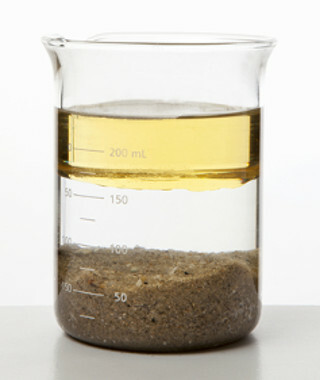THE fractional sedimentation, also known as flotation, it is a method of separation of heterogeneous mixtures using the density difference between the materials as a basic principle to carry out the separation. For this method to be used, the following criteria must be obeyed:
The mixture to be separated must be heterogeneous;
The components of the mixture must be solid (sand and sawdust, for example) or else be a solid and a liquid (sand and oil, for example);
It is necessary to use a liquid that does not dissolve any of the components present in the mixture;
The liquid that will be added to the mixture must have an intermediate density (denser than one and less dense than the other) in relation to the other components.
the method principleof fractional sedimentation it consists of adding a liquid to a certain heterogeneous mixture that does not dissolve any of the components of the mixture. After adding this liquid, which must contain an intermediate density, the less dense component of the mixture floats and the denser component moves to the bottom of the container.
If we have a mixture of sand and sawdust, for example, when adding water, neither of the two components of the mixture will be dissolved. (flotation). Since sawdust is less dense than water, it will float, and the sand will be displaced to the bottom of the container (it is denser than water). To complete the separation of the components of this mixture, a sieving (to remove the sawdust) and a filtration (to separate sand from water).
Do not stop now... There's more after the advertising ;)
If the mixture is composed of sand and oil, for example, with the addition of water, the sand will move to the bottom of the container as it is denser than the water, and the oil will float as it is less dense. The result of this procedure can be seen in the image below:

Flotation of the sand and oil mixture
To complete the flotation carried out in the oil and sand mixture, it is necessary to transfer the part with water and oil to a bromine funnel (to separate the oil from the water) using a pipette. Then, just perform a filtration with the rest of the water mixed with the sand to separate them.
As seen, the fractional sedimentation method alone does not completely separate any of the components of a mixture. Whenever this method is chosen, it must be complemented with one or more separation methods so that all components are properly separated.
By Me. Diogo Lopes Dias
Would you like to reference this text in a school or academic work? Look:
DAYS, Diogo Lopes. "Fracted sedimentation or flotation"; Brazil School. Available in: https://brasilescola.uol.com.br/quimica/sedimentacao-fracionada-ou-flotacao.htm. Accessed on June 28, 2021.
Chemistry

Classification of matter, water, hydrocyanic gas, carbon dioxide, ammonia, hydrogen, helium, substances simple, compound substances, mixtures, phases of a mixture, homogeneous mixture, mixture heterogeneous.



